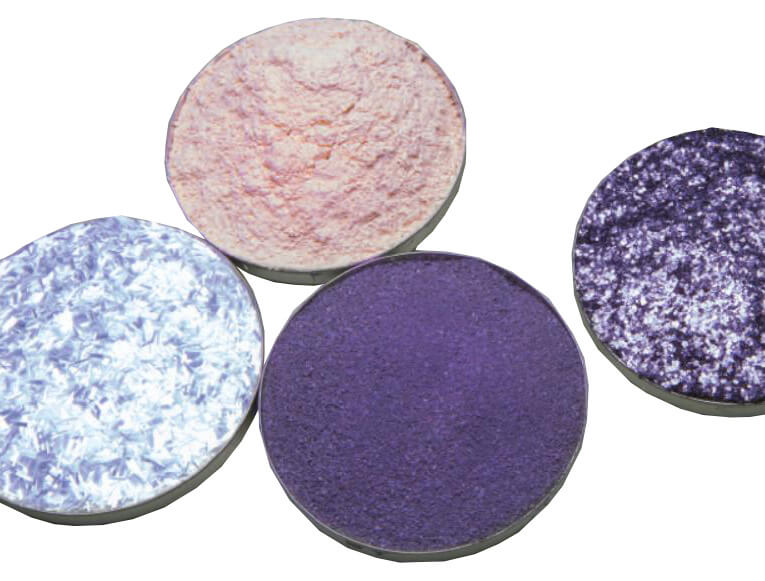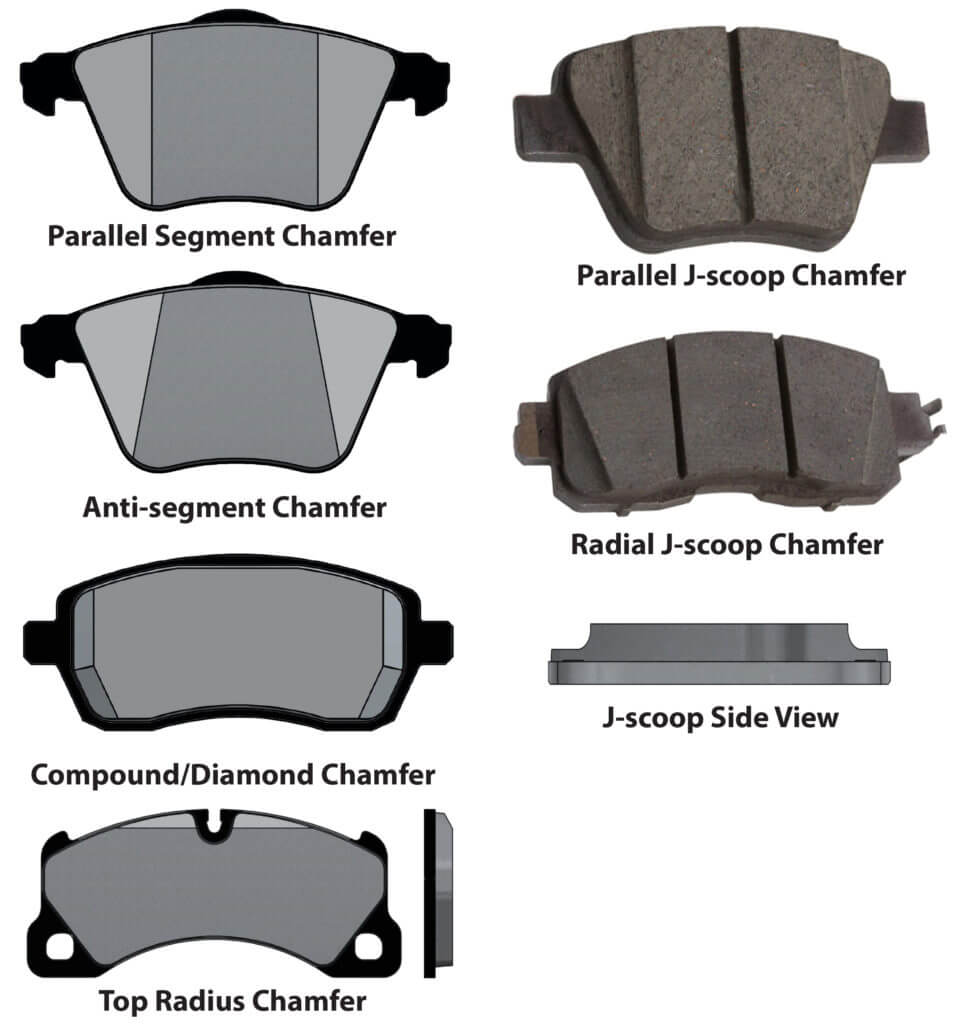How brake pads are made
How brake pads are made
Brake pads are made from a combination of up to 20 different raw materials, the formulation determined by the type of brake pad and it’s friction characteristics.
Brake pad raw materials
• zirconium silicate and aluminum oxide as abrasives
• friction particles derived from cashew shells
• steel wool
• wire
• copper (new EPA rules require the reduction/elimination of copper in brake pads)
• Whiting (Chalk)
• Bronze powder
• Graphite (as a lubricant)
• Vermiculite
• Rubber particles
• Friction Dust
• Sand
• Fillers like calcium carbonate, barytes, and wollastonite
• chopped fiberglass strand
• aluminum oxide
Brake pad raw materials are then blended
Depending on the type of brake pad; NAO, semi-metallic, or ceramic, the raw materials are blended together in powder form in a specific recipe based on the pad’s friction characteristics.
Then a binding agent is added. In most cases it’s a thermoset phenol formaldehyde resins. During the molding process, the high heat and pressure form the friction material into hard blocks.
The brake pad raw materials are then molded
The blended raw materials are poured into a mold and backed under high heat and pressure until the thermoset resin changes transforms into a solid. The brake pad is allowed to cool before further finishing.
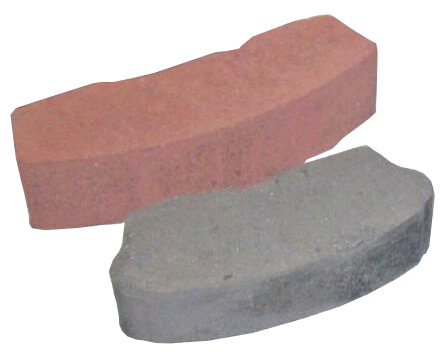 Slots and chamfers are added
Slots and chamfers are added
The molded friction blocks are machined to add noise reducing chamfers and slots
A chamfer is an angled cut on the leading and trailing edges of the friction material. Chamfers reduce vibration as the brake pad first presses against the rotor. Slots prevent cracking and reduce noise.
The friction material is attached to the steel backing plate
Four methods are used to attach the friction material to the backing plate; rivets, adhesive, matfix/in-mold, and mechanical crimping.
Riveted brake pads and shoes
Riveting friction material to the backing plate or brake shoe is rarely done these days. That’s because the friction material must be drilled first and that weakens the friction material.
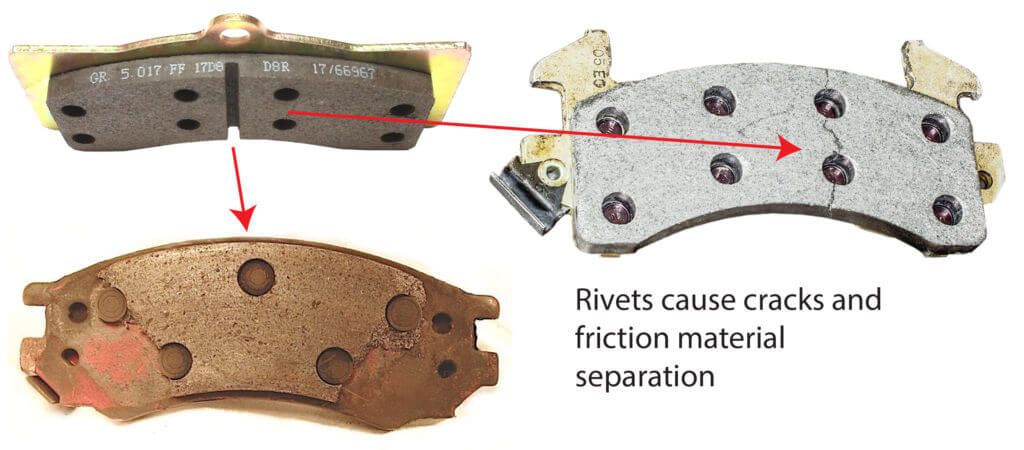
Riveted brake pads fail due to stress from flexing and damage to the backing plate cause by heat/cooling
Adhesive bonded brake pads
Adhesive bonding can be performed during the molding process or after the friction material is formed. For in-mold bonding, the backing plate is coated with a thermoset set adhesive before the powdered material is added to the mold. As the friction material powder is poured into the mold, the first third is blended with additional adhesive to increase the bond to the to backing plate. Then the backing plate and friction material are baked under high pressure.
Matrix/in-mold brake pad bonding process
In the matrix/in-mold bonding process, the backing plate is stamped to form either a matrix or holes in the steel backing plate. The plate is added to the molding process and the friction material is baked/formed right into the matrix.
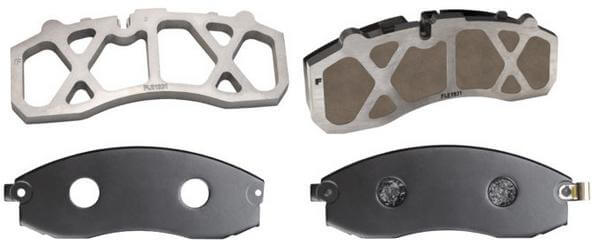
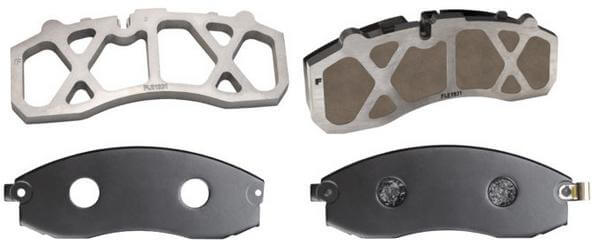
The mechanical crimping method of attaching brake pad friction material
The backing plate is gouged to produce upstanding sharp hooks that will mold with the raw materials, forming a much stronger attachment process.
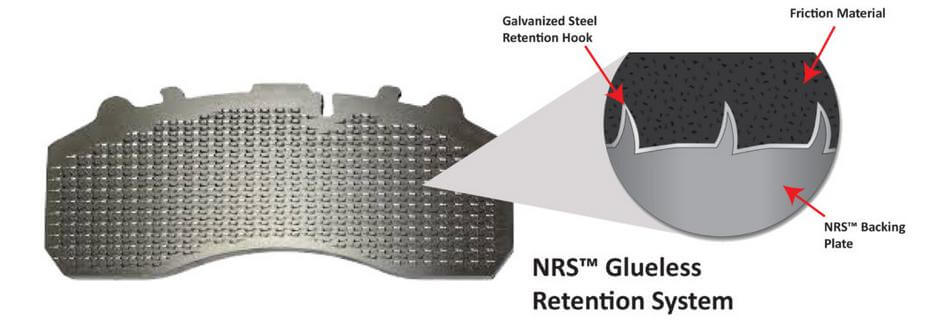
The NRS attachment system uses galvanized steel and glueless hooks to attach the friction material to the backing plate
© 2019 Rick Muscoplat

